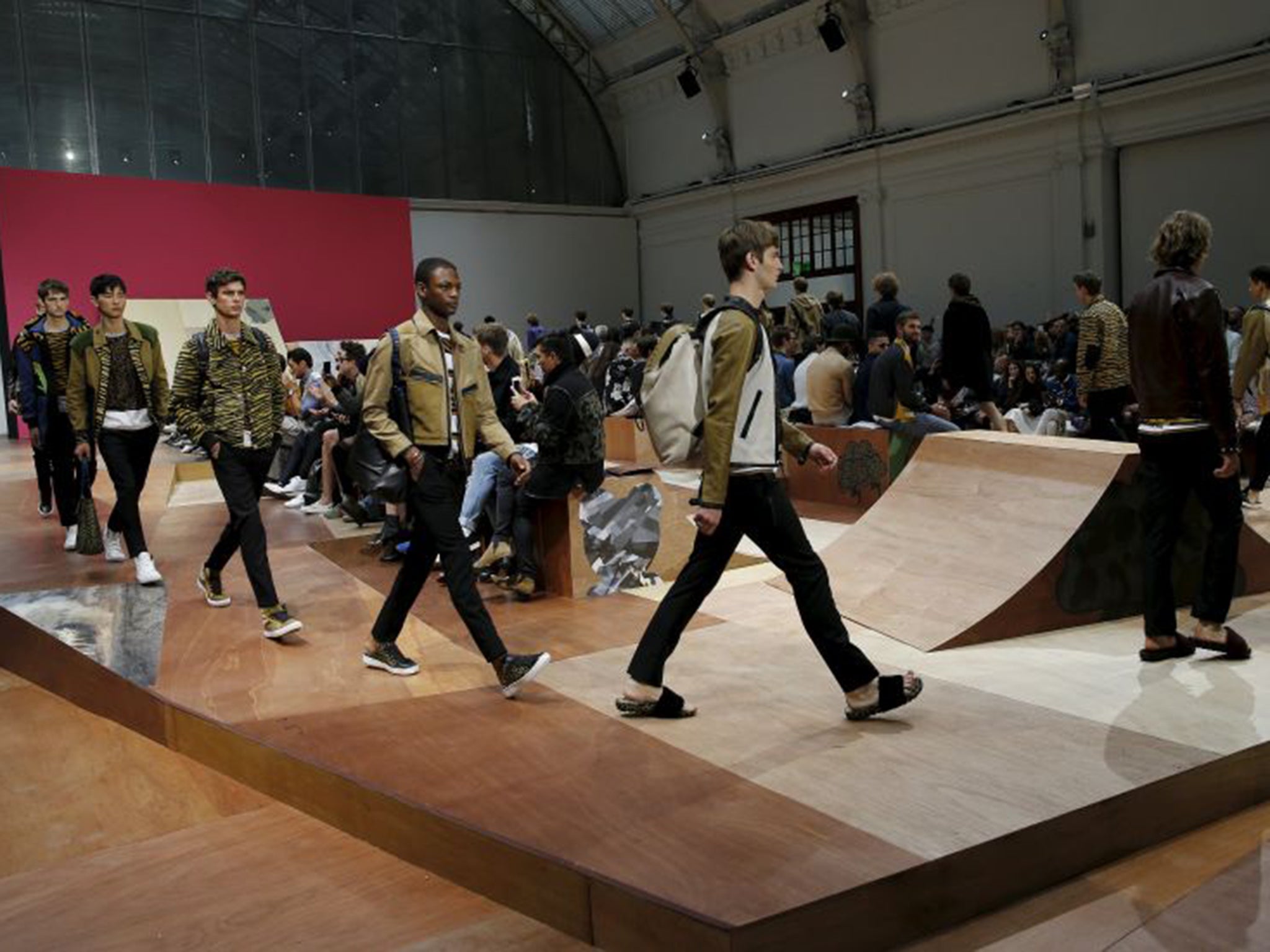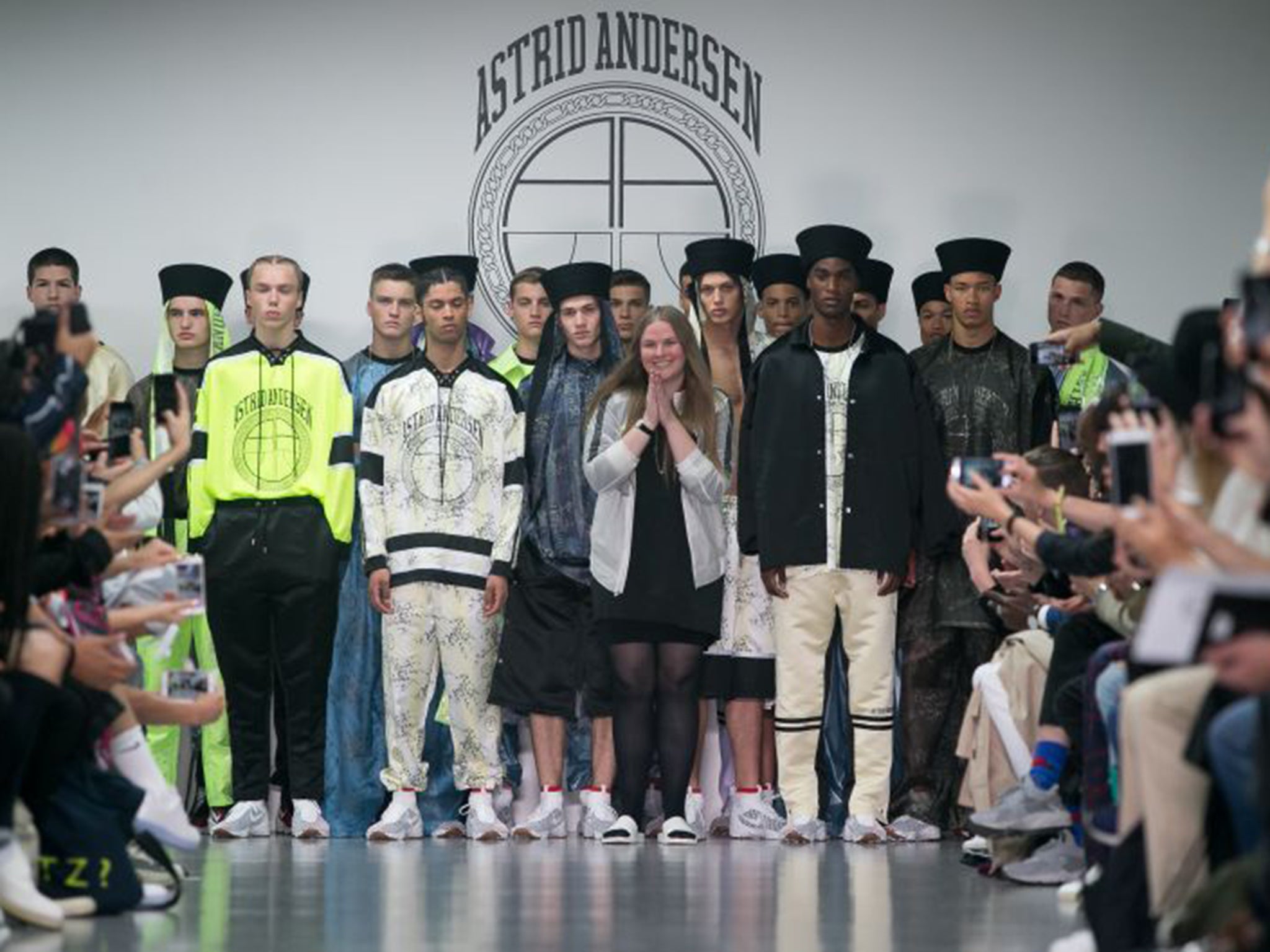London Collections Men: Latest menswear shows veer from safe to arresting
London's schedule seems overstuffed, but also a little half-baked

Does menswear really need a grand gesture in order to register? It’s something you think a lot about during London Collections Men, which have been sprawling across a few days in January and June for three years or so (we’re currently looking at designers’ offerings for spring/summer 2016, in case you lost count). You think about it a lot because, although London’s schedule seems overstuffed, it’s also a little half-baked. Rather than separating the wheat from the chaff, there’s an everything-and-the-kitchen-sink approach – open borders, if you will. It leads to days rammed with events, which nevertheless feel like nothing very much has happened.
At least, it does to me. Which in part necessitates my original question. Placing your clothes on a catwalk – inviting them to scrutiny, possibly derision, and always attention – is a bold move. Especially in menswear, where Beau Brummell’s maxim that a second glance in the street means you’re not well dressed still has traction. Admittedly, not with the hordes of fashion fans – the ones the general public sneer at, posing and preening outside fashion shows. Here’s the thing, though: if you want to make money, as so many designers intend to do with their men’s ranges in particular, it’s not the Beaus but those John Bulls you want to dress.
Look at the American label Coach – “accessible” is a phrase that’s often thrown about around its products; democratic too. Generally, those are in reference to the brand’s traditionally lower price points, which helped net the company revenues of around £3bn for 2014 (mostly womenswear; their menswear is young, and this is only its second official outing).
Nevertheless, “democratic” and “accessible” are appropriate adjectives to describe their design, too. This Coach doesn’t scare the horses.

The fact that Coach’s incumbent creative director, the English designer Stuart Vevers, can quote Beach Boys remixed with hip-hop as a visual influence and then send out nothing more appalling (or less appealing) than jzushed-up workaday wear, patchworked parkas and animal-print backpacks, should be applauded. There’s lots of well-intentioned ideas behind these clothes, but they never overshadow the real deal, even when you’re pock-marking anoraks, skinny jeans and hi-top trainers with distantly Warholian camouflage.
Warhol did like the everyday, after all. He liked boring things. And lots of menswear is boring. But Warhol also said that being good in business is the most fascinating kind of art. I keep thinking of those two notions, and back to the grand gesture fashion demands. That can so often end up alienating most. The struggle is real – namely, the struggle between creating an arresting spectacle, and actually selling. It seldom reaches a satisfactory conclusion in menswear.
Christopher Shannon is a good example: his spring garb, designed, he said, with abstract notions of mass-manufactured sportswear barely clothing teenage ravers at a Marbella foam party. A high fashion version of Sun, Sex and Suspicious Parents, if you will. It looked fantastic. At least, it did to my fashion eye, all that bubbly, foamy volume in spongy Aertex asymmetrically lathering about the body.
An ordinary bloke would take one gawk at Shannon’s hot-pink hot-pants, knicker-line clearly visible through the semi-sheer fabric, and skedaddle for M&S. Which is a bit sad, but understandable.
Plenty of men would be startled and scared off by Astrid Andersen’s clothes too – although she’s netted an audience appreciative of her florid floral silks cut into basketball shapes, her odd palette of old-lady pastels, her love of Chantilly lace, satin and lamé. Lots are in the US – musicians and sports stars eager to challenge their hyper-masculinity. Andersen’s clothes work because they go too far. They seem to be uttering “come and have a go, if you think you’re hard enough?”. In the way only a floral jacquard house-coat, worn by a six-foot-seven basketball player built like a brick shithouse, possibly could.
For the everyman, though, they’re a bit much.
That’s a facet of the mass masculine psyche I wish would change, but it probably won’t. And while London colleges have been overflowing with menswear talent across the past few years, I wonder how many designers have genuinely set themselves the task of building a sustainable business? A business that pleases not just the press and a die-hard cadre of fans willing to wear those grand gestures I started off talking about, but also the passing trade?
I’m not saying our fashion designers should be trying to satisfy everyone; but they should have bigger ambitions than merely satisfying themselves.
Join our commenting forum
Join thought-provoking conversations, follow other Independent readers and see their replies
Comments